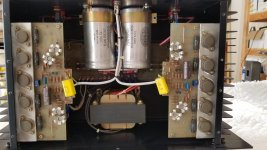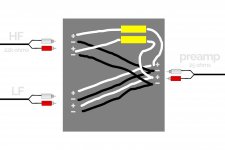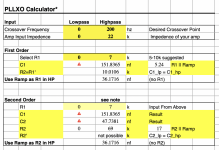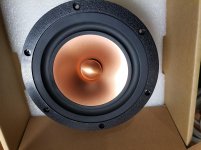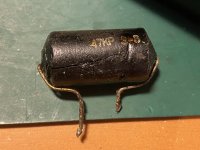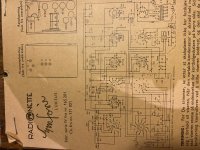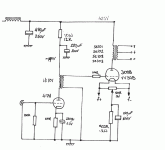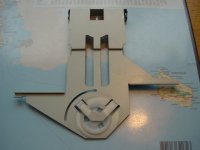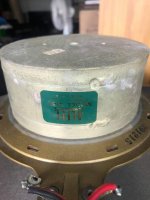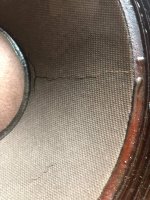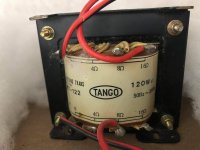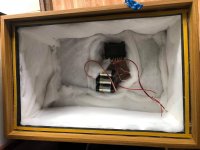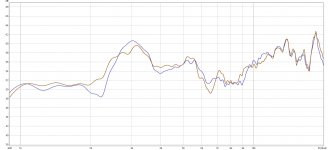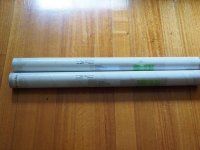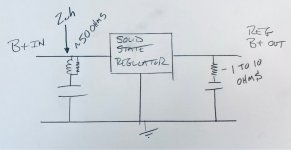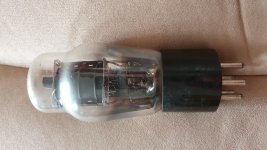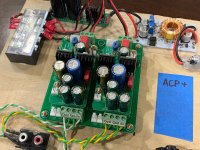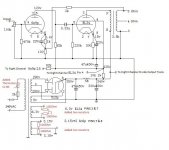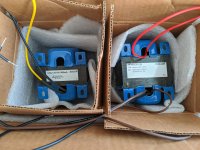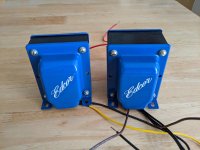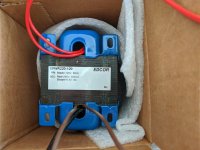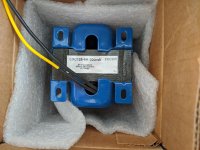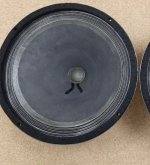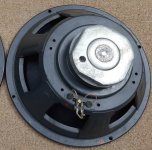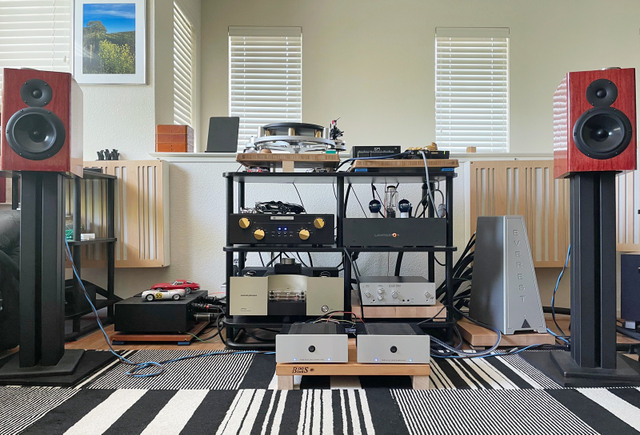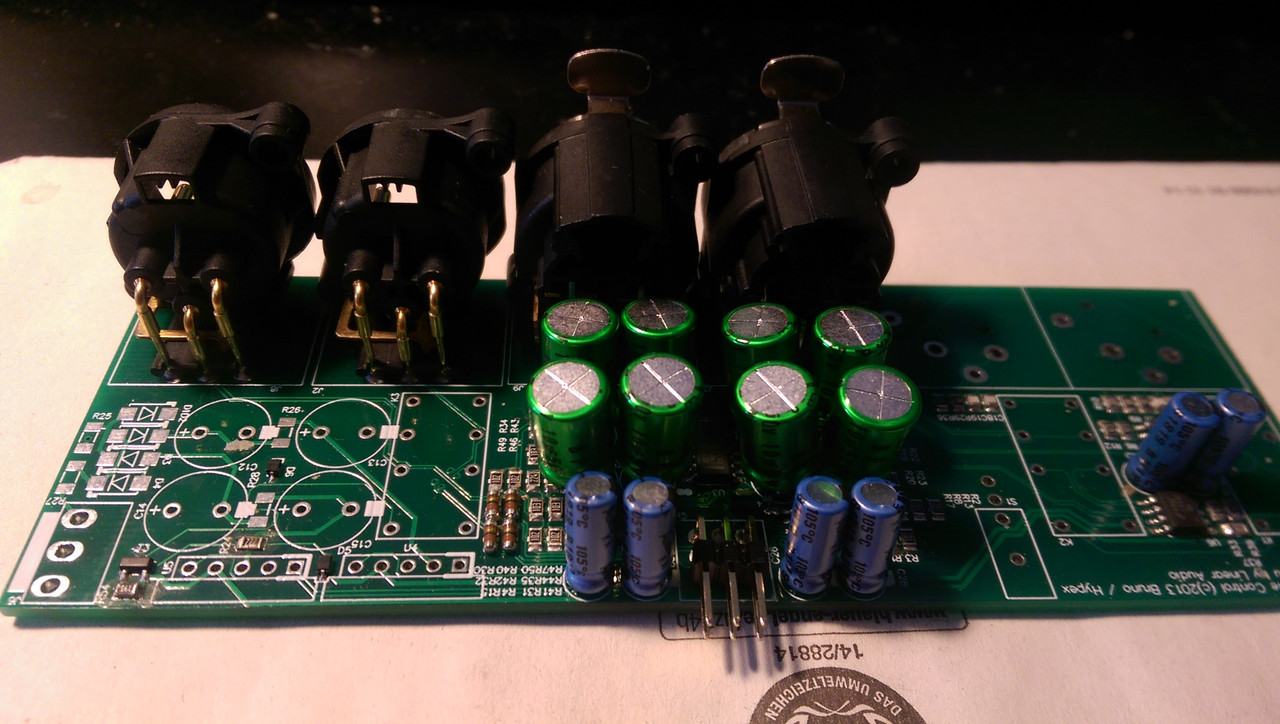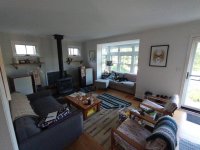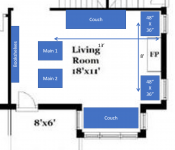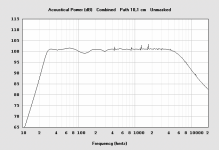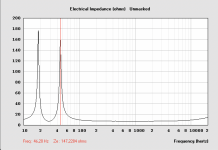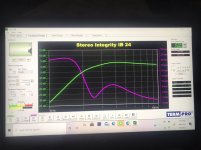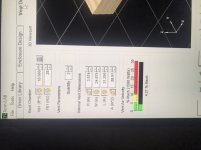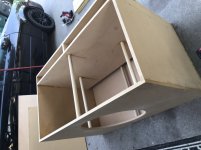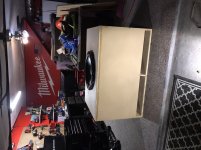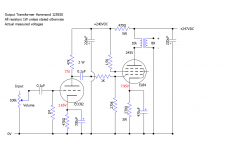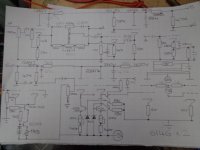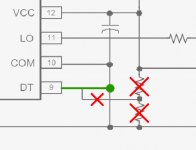I was looking at the notion of a typical Sweep tube / Audio power tube design being just a re-scaling of a basic 6L6GC (for example). Higher power = bigger plate, higher current rating = bigger cathode. So it seemed natural to expect some simple relation to the 6L6GC for the typical selection of an OT primary impedance too.
Since power scales as V * I or V*V/Ro, and impedance as Zo=V/I, a simple formula derivation would be:
W = V * V / Ro
so V = SQRT (Ro *W)
and the OT Zo = k deltaV/deltaI
k is a "constant" to be determined from typical tube/OT datasheet specs
so the magic formula is:
OT Zo = k SQRT(W)/Idc
the 6L6GC bogey Ro getting absorbed into the k for convenience, W is the tube plate Watt spec and Idc is the tube's max DC current spec in milliamps. (usually on the datasheet )
This formula assumes B+ and Idc current will BOTH scale as SQRT of the Watts spec ideally, with the Idc term in there to modify the scaling for tubes designed with a different balance of I to V versus the 6L6GC. Ie, if a scaled tube handles twice the Watts, it would be expected to handle 1.414 x the voltage and 1.414 x the current, so would use the same primary Z OT then. The Idc term fixes deviation of the scaling for different V to I design ratios from the 6L6GC.
Looking at some typical tubes with datasheet spec'd OTs for maximum power output, some typical k values:
6L6GC kSQRT(30)/110 = 5600 Ohms, so k = 112466
6973 kSQRT(12)/45 = 8000, so k = 103923
6AQ5 kSQRT(12)/40 = 10000, so k = 115470
6V6 kSQRT(14)/40 = 8000, so k = 85524
6CA7/EL34 kSQRT(25)/150 = 3400, so k = 102000
6550 kSQRT(42)/190 = 3500, so k = 102612
6BQ5/EL84 kSQRT(12)/65 = 8000, so k = 150111
8417 kSQRT(35)/200 = 3500, so k = 118322
7591 kSQRT(19)/85 = 6600, so k = 128702
6146B kSQRT(27)/175 = 4000, so k = 134715 (5600 Ohm case was right at the max B+, so didn't use it)
6BM8 kSQRT(7)/50 = 7000, so k = 132288
4D32 kSQRT(50)/300 = 3000, so k = 127279
the variations of k above are largely from deviation from the SQRT(W) term for B+ variation with Watts expected, versus the tube design models actually used from the datasheets.
for TV Sweep tubes, the Watt rating is generally more conservatively rated due to the constant high-stress usage in that mode. So for these I multiply the given Sweep Watt rating by 1.333 to use here:
6GE5 kSQRT(23)/175 = 4000 Ohms, so k = 145960
6HJ5 kSQRT(32)/280 = 3000, so k = 148492
6LX6 kSQT(44)/400 = 2500, so k = 150756
6LW6 kSQRT(53.3)/400 = 2000, so k = 109579
42KN6 kSQRT(40)/400 = 2000, so k = 126491
Well, these #s are not written in stone by any means, but maybe guidelines I would say for plotting a 1st load-line on the plate curves graph.
The B+ available would affect the load Z choice obviously, and efficiency goes up with higher B+ and higher load Z.
One needs to check that V and dissipation ratings are not exceeded. The screen V would be selected to just enable the max current on the load line.
Distortion is another matter for pentodes, since there is typically an optimum load Z due to screen current distortion at high load Z setting in. The later TV Sweep tubes typically had reduced screen current figures shown, so that allows using a higher load Z without distortion increasing. 21LG6A being a good example, very straight lines for plate curves.
https://frank.pocnet.net/sheets/123/6/6LG6.pdf
Constant k in the above formula assumes B+ and OT Z will scale up or down as the SQRT of Watts (with modification for the cathode size deviating from SQRT(W) also). Since the 6L6GC starts at 450V B+ here, this may not be a desirable scheme if trying to stick with lower cost electrolytics in the power supply for bigger tubes. In which case, one should scale from the 6L6GC using current only (so a modded formula then: Zo = k2 / Idc, with different k2 factors from the datasheet models ).
Just having some fun looking for patterns.
Just for curiosity:
211 tube kSQRT(100)/175 =9000, so k = 157500
300B tube kSQRT(40)/100 = 7000, so k = 110679
Hmmm, works OK for triodes even. Upgrade that Magic formula to Miracle formula!
